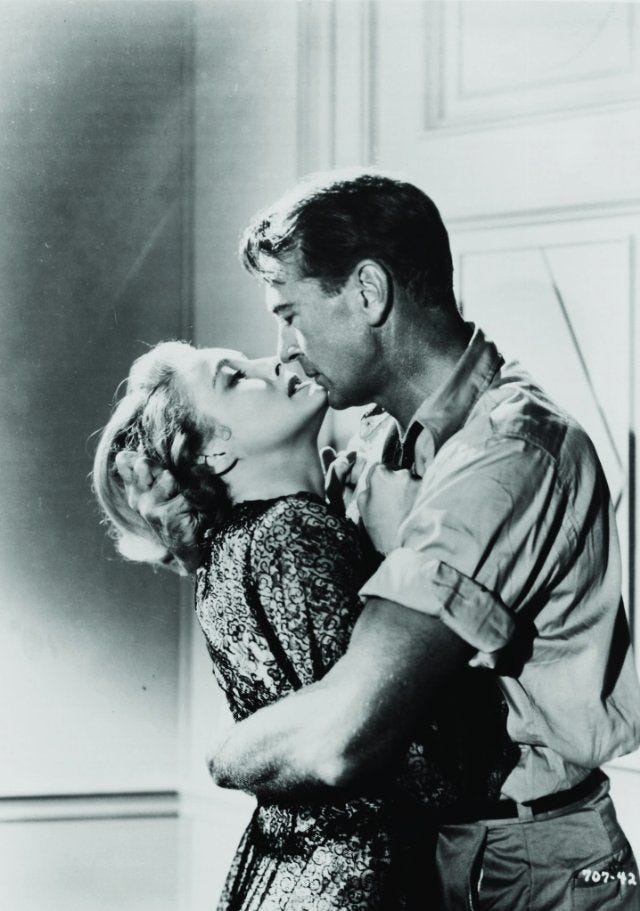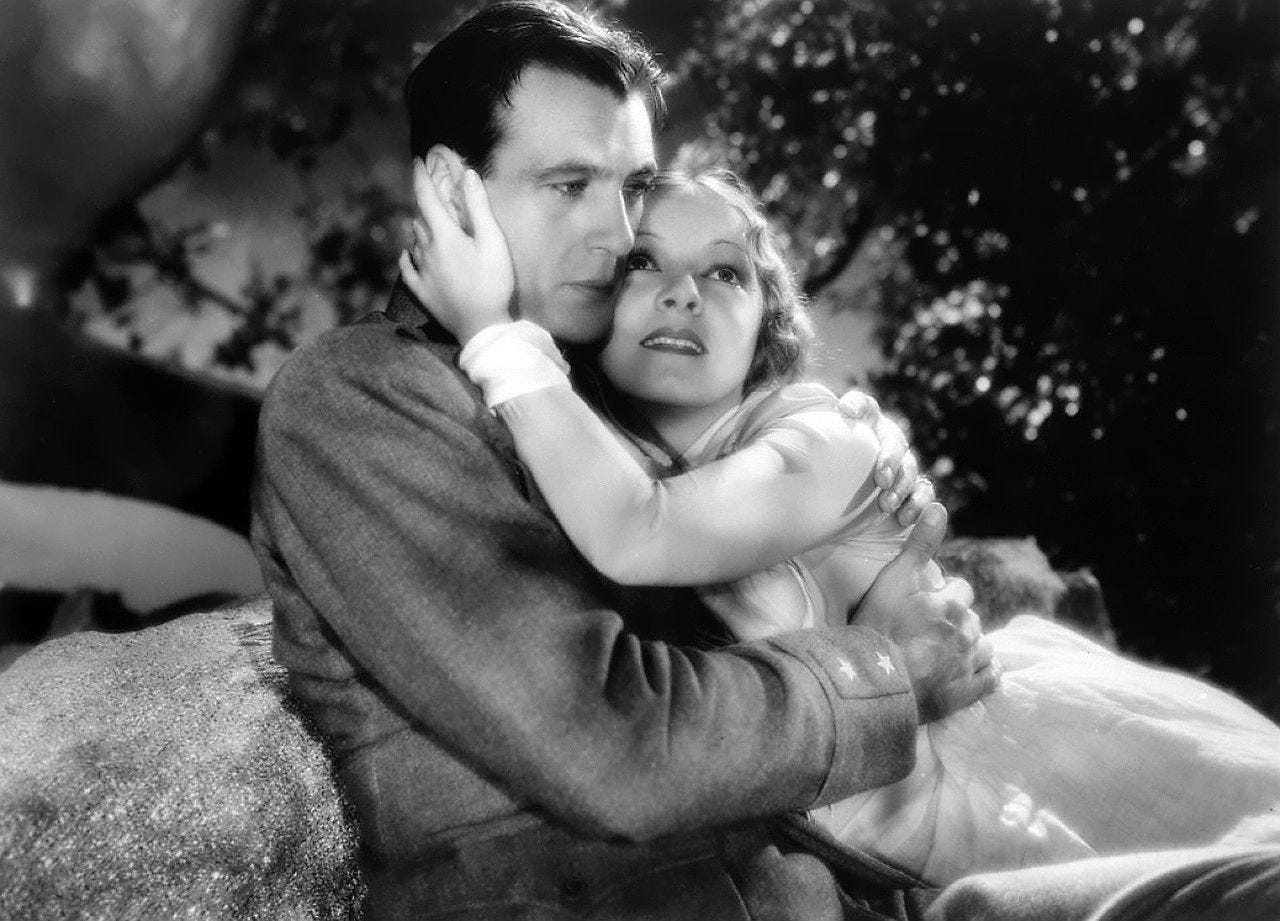Historical Personages: Gary Cooper
Lorna was enjoying herself, seated at the center of a group of calculating women, working on a soap carving — it depicted the woman who had requested it in the passionate embrace of Gary Cooper — when Herb’s call came through.
Herb ’n’ Lorna, Chapter 15
Gary Cooper (born Frank James Cooper; May 7, 1901 – May 13, 1961) was an American actor known for his strong, quiet screen persona and understated acting style. He won the Academy Award for Best Actor twice and had a further three nominations, as well as an Academy Honorary Award in 1961 for his career achievements. He was one of the top 10 film personalities for 23 consecutive years and one of the top money-making stars for 18 years. The American Film Institute (AFI) ranked Cooper at No. 11 on its list of the 25 greatest male stars of classic Hollywood cinema.
Cooper’s career spanned 36 years, from 1925 to 1961, and included leading roles in 84 feature films. He was a major movie star from the end of the silent film era through to the end of the golden age of Classical Hollywood. His screen persona appealed strongly to both men and women, and his range included roles in most major film genres. His ability to project his own personality onto the characters he played contributed to his natural and authentic appearance on screen. Throughout his career, he sustained a screen persona that represented the ideal American hero.



Technology: Telephony: Party Lines and Selective Ringing
“What’s the matter, Daddy?” she asked. “What’s wrong?”
“I — ”
“The phone’s ringing.”
“Yes. It’s — ”
“Is it our ring?”
“I don’t know. I — I didn’t pay attention.”
“It is. It’s our ring. You’d better get it. It must be important.”
“It’s probably your mother, Ella. I have to — I’ll be right back.” Herb backed out of the room, and he dashed down the hall to get the phone.Herb ’n’ Lorna, Chapter 15
A party line (multiparty line, shared service line, party wire) is a local loop telephone circuit that is shared by multiple telephone service subscribers.
Party line systems were widely used to provide telephone service, starting with the first commercial switchboards in 1878. A majority of Bell System subscribers in the mid-20th century in the United States and Canada were serviced by party lines, which had a discount over individual service. During wartime shortages, these were often the only available lines. …
Party lines provided no privacy in communication. They were frequently used as a source of entertainment and gossip, as well as a means of quickly alerting entire neighborhoods of emergencies such as fires, becoming a cultural fixture of rural areas for many decades. …
Selective ringing
To signal specific subscribers on party lines selectively, telephone operating companies implemented various signaling systems. As upgrades made party lines more popular in the 1940s, local telephone companies ran frequent ads to instill community spirit and personal courtesy in party-line subscribers. The earliest selective system was the code ringing system, in which each telephone subscriber was assigned a specific ringing cadence, (not to be confused with modern ring tones). Although various systems were implemented, one that limited the number of coded rings but established a uniform and readily understood format, was to first give the subscriber number as individual digits, which could be from one to four digits long per exchange, separated by the instructional word “ring” followed by the two digits of the ring code where the first digit indicated the number of long rings, followed by the second digit indicating the number of short rings. Thus spoken, for example, as “nine, three; ring two, two” to mean subscriber No. 93 with ringing code 2 long and 2 short, and written as “93R22,” (and if outside the given exchange, then the exchange would be asked for by name before the requested number and ringing code, e.g. “Rockridge nine, three; ring one, two” i.e. “(On the) Rockridge (exchange), (subscriber No.) nine, three; ring one long, and two short,” and written as “Rockridge 93R12”. … Whilst this practice was common, it was not ubiquitous, since despite giving a standard configuration for terse, easily interpreted numbers with their respective ring codes, its chief functional drawback was with the first ring always being long and the second always being short, which limited the number of brief and thus practical ringing combinations that could be used on single multiparty subscriber numbers. Further to this functional deficiency, was a twofold practical deficiency. For though one was only to answer one’s own ringing code, every party on the same subscriber line could hear all the ringing codes. This meant firstly, frequently ringing telephones were a disruptive annoyance, as each party on the line had to stop to listen every time the telephone rang to determine if they were the party being called on any given ring. Secondly, if any party on a given line should so be inclined, there was the opportunity to listen to other parties’ calls.
Have you missed an episode or two or several?
You can begin reading at the beginning or you can catch up by visiting the archive or consulting the index to the Topical Guide.
You can listen to the episodes on the Personal History podcast. Begin at the beginning or scroll through the episodes to find what you’ve missed.
You can ensure that you never miss a future issue by getting a free subscription. (You can help support the work by choosing a paid subscription instead.)
At Apple Books you can download free eBooks of “My Mother Takes a Tumble,” “Do Clams Bite?,” “Life on the Bolotomy,” “The Static of the Spheres,” “The Fox and the Clam,” “The Girl with the White Fur Muff,” “Take the Long Way Home,” “Call Me Larry,” and “The Young Tars,” the nine novellas in Little Follies, and Little Follies itself, which will give you all the novellas in one handy package.
You’ll find overviews of the entire work in An Introduction to The Personal History, Adventures, Experiences & Observations of Peter Leroy (a pdf document) and at Encyclopedia.com.




